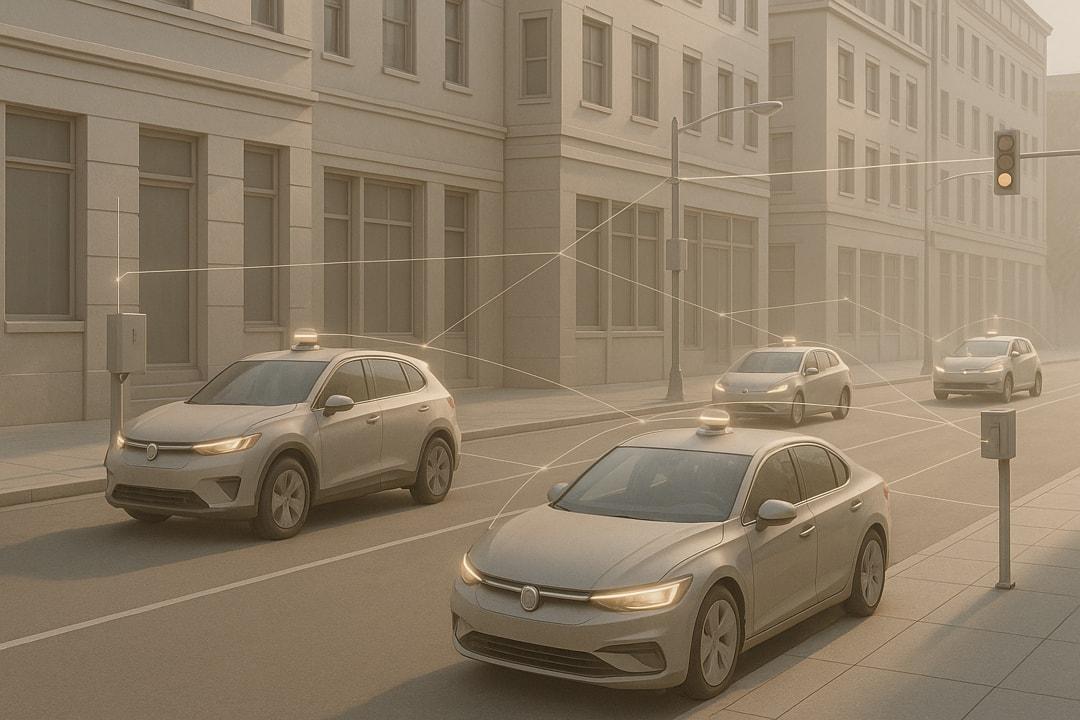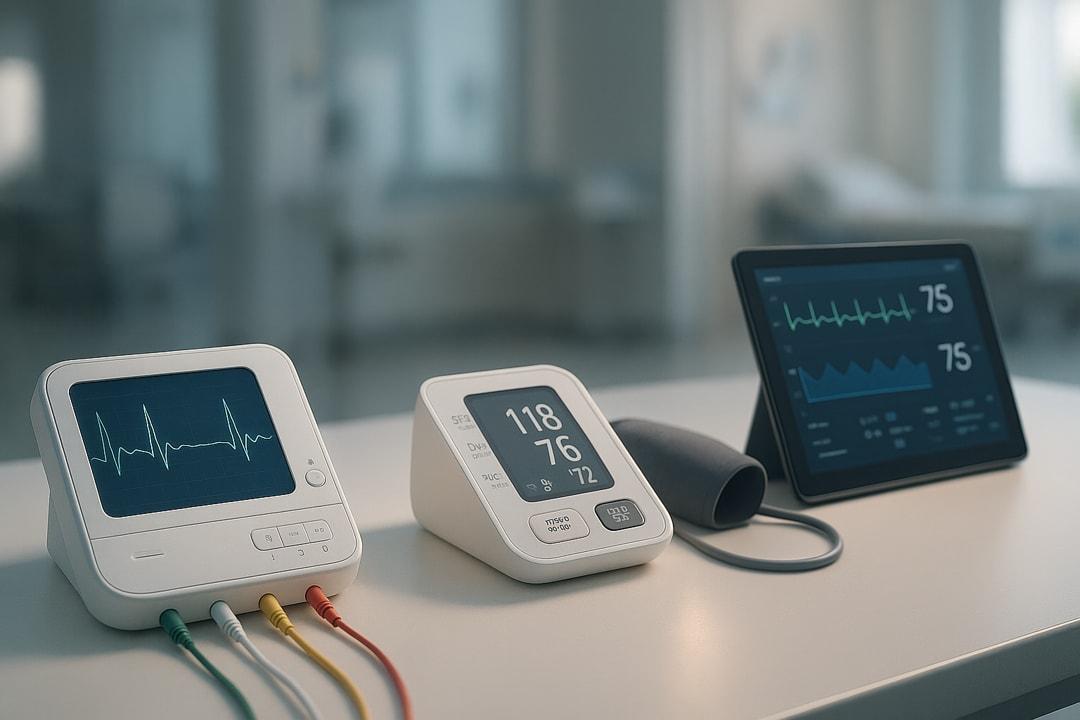Do you know edge computing? It is a method of data processing that shifts computing power closer to the data source. This significantly reduces latency and enables faster real-time decision-making. This technology is becoming key for IoT, autonomous vehicles, or smart cities and is gradually changing the internet as we know it. What does edge computing mean and how will it impact our future?

What is edge computing?
Imagine you are going for a quick shopping trip. Either you can head to a large hypermarket on the city outskirts or pop into a convenience store just around the corner. What would you choose?
Your technology faces a similar choice day in and day out, and edge computing is like that small convenience store. Instead of the traditional method of sending information to distant data centers, processing occurs directly in the devices that generate the data or in their immediate vicinity.
Typical devices for edge computing include industrial gateways (edge gateways), intelligent sensors, camera systems with integrated AI, or even common smartphones and vehicle units with chips capable of running neural networks.

Why did the need for edge computing arise?
The enormous increase in the amount of data generated has caused classic cloud infrastructure to reach its limits. Processing all data remotely in data centers results in higher latency, increased energy consumption, and unnecessary costs. Edge computing addresses these challenges by minimizing data transfer and accelerating their processing.
For example, security cameras can evaluate video footage themselves and immediately alert to potential threats without having to send the videos to a remote server. Similarly, smart sensors in industrial operations evaluate information on-site.
What are the main advantages?
As we have already hinted at multiple times, the main advantage of processing data using edge computing is the dramatic reduction in delay between action and reaction. While traditional cloud solutions can have latency ranging from tens to hundreds of milliseconds, edge computing allows for response times between 1-20 ms – which is crucial for things like autonomous driving or surgical robots.
Since data stays close to the source, they also remain more secure. When they don't have to travel over the internet, the risk that someone will misuse or intercept sensitive information is minimized. Along with this, there are lower costs, not only in terms of security but also for data transfer and storage. For businesses, this means greater efficiency and more interesting profits.
You have surely experienced that some of your devices stopped working because it lost signal. With edge computing, this doesn't happen because it allows systems to function without constant internet connection. Technologies hence gain greater stability and are not as vulnerable to disruptions.
And what about the risks?
Nothing is perfect, so there are certain risks associated with edge computing. The decentralized nature of the system complicates management and maintenance, as the infrastructure is spread across various locations. Potential disadvantages also relate to security – while the risk of data leakage during transmission is smaller, local devices are exposed to higher risks of physical or cyber attacks.
Another obstacle could be the absence of universal standards, which often leads to problems with compatibility between different devices. Consequently, integrating them into existing systems can be problematic. Additionally, it is important to consider that devices using edge computing have limited performance and memory capacity, which can limit their ability to process large volumes of data or handle more complex tasks.
Where is edge computing used in practice?
Edge computing is no longer just a futuristic concept but a technology that is changing the world around us every day. It helps smart cities manage traffic, ensuring that traffic lights immediately respond to current traffic conditions and street lighting automatically adjusts to the situation on the street.
As already mentioned, it is also an essential helper for autonomous vehicles, enabling them to analyze their surroundings in a fraction of a second to safely respond to every change.
And it brings a revolution to healthcare. Smart medical devices can monitor a patient's condition in real-time, enabling them to receive quicker assistance and more effective treatment. Even industrial machines are capable of making decisions on their own without waiting for instructions from distant data centers, thanks to edge computing.

How will edge computing affect the future?
It is already clear that edge computing will gradually change the fundamental structure of the internet. Edge computing will become a key player wherever immediate and reliable data processing is needed. And whether it's industry, healthcare, transportation, or our daily lives, it won't make a difference.
The expansion of edge computing goes hand in hand with the deployment of 5G networks, the development of artificial intelligence, and the explosive growth of IoT devices. It is precisely thanks to these technologies that its role in the future is expected to grow significantly. According to the American research and advisory company Gartner, by 2025, up to 75% of all data will be generated and processed outside traditional data centers – precisely at the level of edge devices.
It's not just a technical upgrade, but the arrival of an internet that is faster, smarter, and adapted to a world that is changing in real-time.
Internet via light or how does Li-Fi work?

With the growing number of connected devices and the increased volume of data being transmitted, new ways are being sought to speed up and improve network efficiency. Internet via light, referred to as Li-Fi technology, uses LED lighting for wireless data transmission and promises higher speed and greater security. Let's see how it works and where it's already being tested.
What will 6G internet bring – lightning-fast connection, smart cities, and artificial intelligence in the network

Mobile networks of the sixth generation will push the boundaries of communication and data transmission. 6G internet will offer speeds in the order of terabits, minimal delay, and integration with artificial intelligence. In the article, we explain how this technology works, how it differs from 5G, what frequencies it uses, and why it is essential for smart cities and modern industry.
Wireless charging: What are its benefits, limitations, and where is it heading?

Wireless charging has evolved from a luxury feature to a standard part of most modern phones. Simply place your mobile on the pad, and energy begins to flow without searching for a cable and connector. We explain how wireless charging works, what it entails, and why Qi and Qi2 technologies have become the new standard of convenience.
What is Wi-Fi 7? What changes does it bring and when does it make sense to switch

Today's home Wi-Fi network is under increasing pressure. It has to handle video calls, online gaming, and dozens of smart devices. The new Wi-Fi 7 standard offers a solution that takes wireless connectivity to the next level. We'll explain what this standard means in practice and why it might be crucial for the future of home and business networks.
What is DNS? Everything you need to know about its functionality and setup

When you type a website address into the browser, the correct page loads in an instant. This is managed by the DNS system, without which the internet as we know it would not exist at all. In this article, you will learn what DNS is, how it works, what types of records it contains, and why it is important for both speed and security of the connection.
How does fiber optic internet work and what do you need for its installation?

Fast and stable connection is a basic necessity in every household today. The solution is fiber optic internet, which works differently than regular cables and offers greater reliability to users. We'll explain how this technology works in practice, what it entails to run a fiber optic cable to your home, and what equipment you’ll need to keep everything running smoothly.